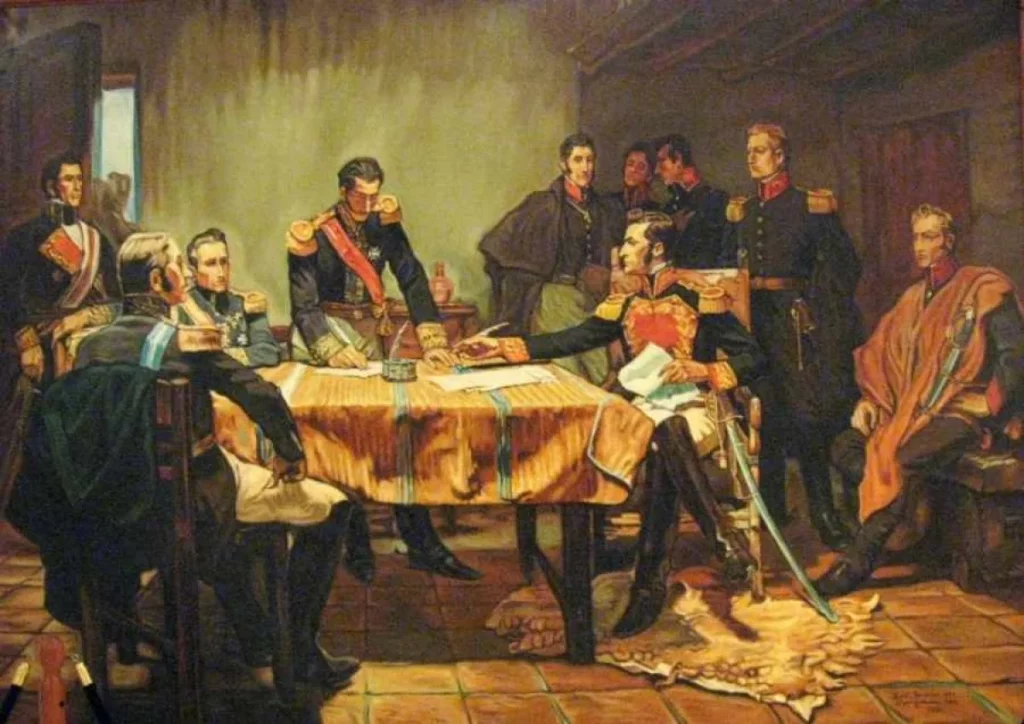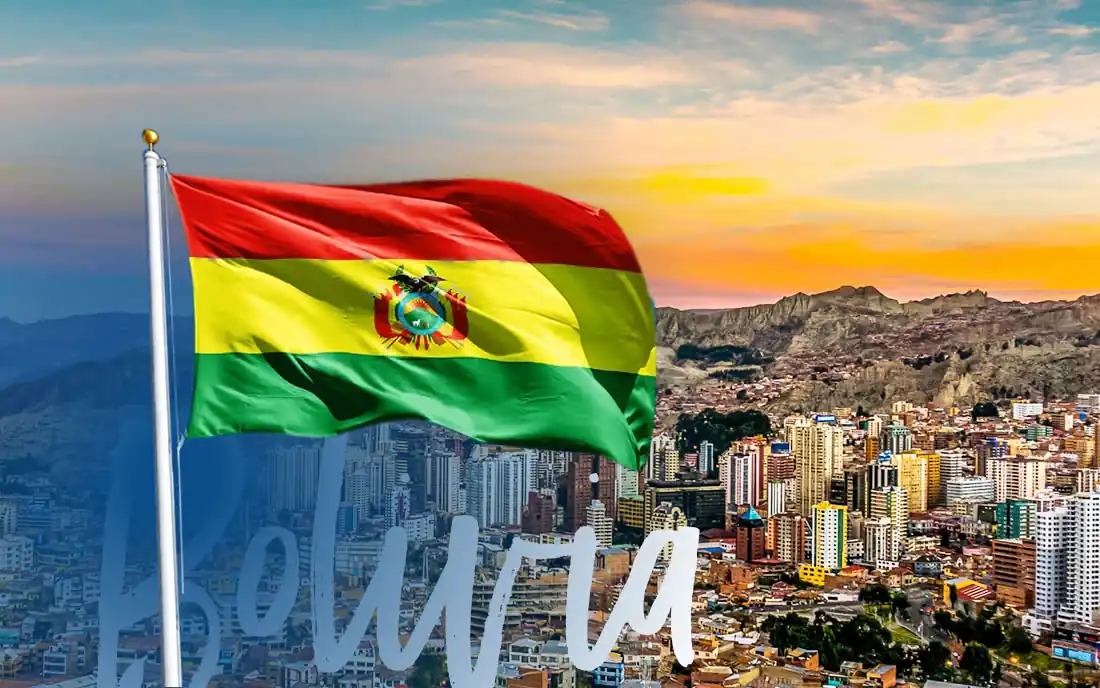How many years does Bolivia celebrate this August 6th, , is one of the questions that always arises as we approach Bolivia’s anniversary. Considering that Bolivia’s independence was declared on August 6, 1825, this August 6th, , Bolivia celebrates years of independence.
Bolivia’s Independence Day: August 6, 1825 – A Brief Overview
To understand the essence of Bolivia’s August 6 celebration, delving into its history becomes imperative. Bolivia, nestled in the heart of South America, emerged on August 6, 1825, after a hard-fought war of independence against Spain.
Throughout its history, Bolivia has navigated through moments of glory and challenges. Governments have changed, political and social landscapes have shifted, yet the nation has held onto its essence and national pride. August 6 is celebrated nationwide with events and festivities that honor its hard-fought independence.

Bolivia’s history is punctuated by significant episodes, such as the 19th-century War of the Pacific, pitting Bolivia against Chile and Peru, resulting in the loss of the Litoral Department. Simón Bolívar, a key figure in South America’s struggle for independence, stands out as one of Bolivia’s founding fathers.
⭐ Why Bolivia is a Landlocked Country ?
Independence Day of the Plurinational State of Bolivia
The Independence of Bolivia refers to the revolutionary process that led to the establishment of the Republic of Bolivia as an independent state. The territories of modern-day Bolivia were previously known under the colonial administrative name of the Audiencia of Charcas. This region was also referred to as Upper Peru by inhabitants of the Rio de la Plata region and Peruvians.
Strategically situated between Lower Peru and the provinces of the Rio de la Plata, Bolivia’s fight for independence was closely linked to the independence movements of Argentina and, subsequently, Peru. To counter the independence efforts of the United Provinces of the Rio de la Plata, the Viceroy of Peru, José Fernando de Abascal, reasserted his authority over the Audiencia of Charcas, as had been the case until 1776. He deployed the Royal Army of Peru in the region. From 1810 to 1826, Upper Peru became a battleground for relentless conflicts and battles between royalist forces from Peru and Upper Peru, and the patriot forces of Argentina and Upper Peru. Following the Battle of Ayacucho, these groups were joined by patriot forces from Peru and the Gran Colombia under the command of Sucre, who eventually achieved independence in territories still under royalist control.
Sucre and the Liberating Army of Peru
On August 6, 1824, Bolívar defeated the royalist army led by General José de Canterac and Colonel Manuel Isidoro Suárez at the Battle of Junín. This victory was particularly significant as it set the stage for the final triumph at the Battle of Ayacucho. The royalist leaders, Canterac, Carratalá, Váldés, and La Serna, gathered in Cuzco to reorganize their forces and confront the victors of Junín. Sucre, acting on Simón Bolívar’s orders, decided to continue the military campaign in Peru, and on December 9, 1824, the independence fighters secured a decisive victory on the plains of Ayacucho, in Quinua. The surrender of Viceroy La Serna acknowledged the “Independence of Peru and America.”
On January 29, 1825, General José Miguel Lanza, hailing from nearby rural areas (republiquetas), captured the city of La Paz and declared the independence of the Upper Peru Provinces, being named their first president. On February 6, Marshal Sucre, leading the Liberating Army, crossed the Desaguadero River.
Indeed, in the third week of January, the victorious army in Ayacucho continued from Cuzco towards Puno, with the Peruvian Division, under the command of Colonel O’Connor, leading the way. The Peru Battalion No. 3 remained as a garrison in Cuzco.
Sucre advanced on Upper Peru with the liberating army. The Colombian division (Córdova) was stationed in La Paz, while the Peruvian division moved into Oruro and Potosí, where they received news of Olañeta’s death on April 2, 1825, in the Battle of Tumusla.
The Declaration of Independence

Following the Ayacucho victory, and acting on precise instructions from Bolívar, Commander Sucre entered Upper Peruvian territory on August 6, 1825. His role was to provide a legal framework to a process that the patriots had already initiated.
However, the fate of the new republic was subject to three possibilities: continuing unity with Buenos Aires by joining the United Provinces; maintaining allegiance to Peru, acknowledging the incorporation measures dictated by Viceroy Abascal as a result of the May 25, 1809 revolution in Sucre (Capital of Bolivia); or resolutely supporting the absolute independence of Upper Peru, not only from Spain but also in relation to the United Provinces of the Rio de la Plata and newly liberated Peru.
The Act of Independence, drafted by the president of the Congress, José Mariano Serrano, was declared by 7 representatives from Charcas, 14 from Potosí, 12 from La Paz, 13 from Cochabamba, and 2 from Santa Cruz on July 23, 1825. The “Act of Independence” was dated August 6, 1825, to commemorate the Battle of Junín, which took place on August 6, 1824.
A decree was issued stating that the new state would be named Bolívar, in honor of the Liberator, who was also appointed as the “Father of the Republic and Supreme Chief of the State.” Bolívar expressed his gratitude for these honors but declined the acceptance of the Presidency of the Republic, appointing General Antonio José de Sucre to the position instead.
Years Since Foundation- How Old is Bolivia ?
Since its establishment in 1825, Bolivia has witnessed numerous years of change, progress, and challenges. Presently engaged in a process of development and the construction of a more prosperous and equitable society, Bolivia reflects on its journey with pride.
If we calculate the years elapsed from 1825 to 2024, we find that Bolivia will celebrate its 199th year of independent existence on August 6, 2024. Almost two centuries—a remarkable achievement worthy of celebration for the entire Bolivian population.
Significance of the Celebration
The anniversary celebration on August 6 holds a special place in the hearts of all Bolivians, both within and beyond the country’s borders. It serves as an opportunity to remember and appreciate the courage and sacrifice of those who fought for independence.
Moreover, the celebration is a display of pride and love for the homeland. On this day, Bolivians unite in a singular voice to pay homage to their country and its history. Parades, cultural events, concerts, and various activities take place to commemorate this significant date.
FAQ’s
In 2024, Bolivia celebrates 199 years of independent existence since its foundation in 1825.
August 6 marks the anniversary of Bolivia because on that day in 1825, the country declared its independence from Spain.
Bolivia’s independence is a historic milestone that marked the end of Spanish rule and the beginning of a new chapter in the country’s history. It is a symbol of freedom and sovereignty
Simón Bolívar was a Venezuelan military and political leader who played a pivotal role in the independence of several South American countries, including Bolivia. He is considered one of the founding fathers of Bolivia, and his legacy lives on in the country.
Bolivia’s anniversary is celebrated with great enthusiasm across the country. Military and civic parades, cultural events, concerts, and festivities take place to honor the country and its history. It is a day of joy, pride, and unity for all Bolivians.

